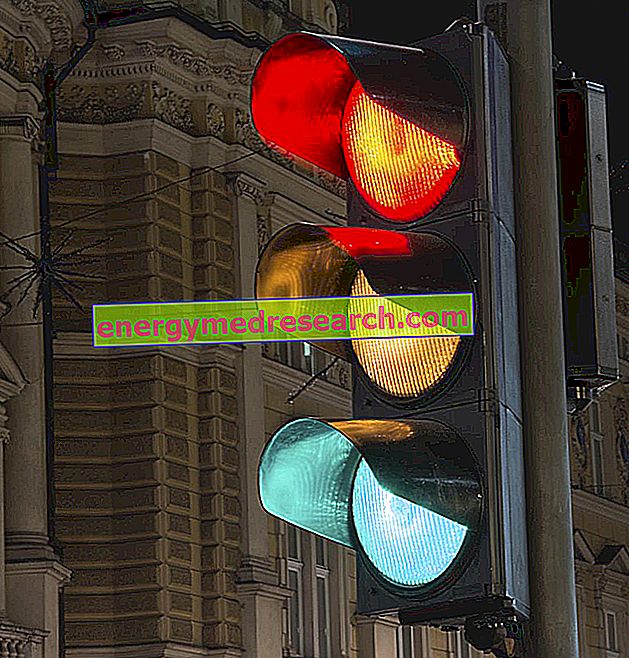
What is Stribild - Elvitegravir, cobicistat, emtricitabine and tenofovir disoproxil used for?
Stribild is an antiviral medicine that contains the active substances elvitegravir, cobicistat, emtricitabine and tenofovir disoproxil . It is used in adults for the treatment of human immunodeficiency virus 1 (HIV-1) infection, a virus that causes acquired immune deficiency syndrome (AIDS). Its use is intended only for patients not previously treated with HIV or for whom the disease is not resistant to the antiviral agents contained in Stribild.
How is Stribild - Elvitegravir, cobicistat, emtricitabine and tenofovir disoproxil used?
Stribild can only be obtained with a prescription and treatment should only be started by a doctor with experience in the field of HIV infection. Stribild is available as tablets (150 mg of elvitegravir / 150 mg of cobicistat / 200 mg of emtricitabine / 245 mg of tenofovir disoproxil). The recommended dose is one tablet a day, taken with food. For more information, see the package leaflet.
How does Stribild - Elvitegravir, cobicistat, emtricitabine and tenofovir disoproxil work?
Stribild contains four active ingredients. Elvitegravir is a type of antiviral agent called an "integrase inhibitor". It blocks integrase, an enzyme involved in the HIV-1 replication process, thus reducing the virus's ability to replicate normally and slowing the spread of infection.
Cobicistat serves to enhance the effects of elvitegravir, prolonging the time of action in the body. Tenofovir disoproxil is a "prodrug", which means that it is converted into the active substance tenofovir in the body. Tenofovir and emtricitabine are closely related types of antiviral agents, called reverse transcriptase inhibitors. They block the activity of reverse transcriptase, an enzyme produced by HIV-1 that allows it to replicate in infected cells. Through blockade of reverse transcriptase, Stribild reduces the amount of HIV-1 in the blood, keeping it at a low level. Stribild does not cure HIV-1 infection or AIDS, but it may delay the damage to the immune system and the development of infections and diseases associated with AIDS.
What benefit has Stribild - Elvitegravir, cobicistat, emtricitabine and tenofovir disoproxil shown during the studies?
Stribild has been the subject of two main studies conducted in 1 422 patients with HIV-1 not previously treated, in which Stribild was compared with other antiviral medicines. The main measure of effectiveness was based on reducing the viral load (the amount of HIV-1 virus in the blood). Patients who achieved a viral load below 50 copies of HIV-1 RNA / ml after 48 weeks of treatment were considered responders. In the first study, which involved 715 patients, Stribild was compared to the combination of ritonavir, atazanavir plus a medicinal product containing emtricitabine and tenofovir disoproxil (also contained in Stribild). After 48 weeks, approximately 90% of the patients treated with Stribild (316 out of 353) showed a response to treatment, compared to about 87% of patients treated for comparison (308 out of 355). In the second study, which involved 707 patients, Stribild was compared to a medicine containing efavirenz, emtricitabine and tenofovir disoproxil. After 48 weeks, approximately 88% of patients treated with Stribild (305 out of 348) showed a response to treatment, compared to about 84% of patients treated for comparison (296 of 352).
What is the risk associated with Stribild - Elvitegravir, cobicistat, emtricitabine and tenofovir disoproxil?
The most common side effects associated with Stribild are nausea and diarrhea, seen in more than 1 in 10 people. In patients taking some of the components of Stribild, some rare but serious side effects have been observed, including lactic acidosis (excess acid) lactic acid in the blood) and severe kidney problems. For the full list of all side effects reported with Stribild, see the package leaflet. Stribild should not be used in patients who have previously stopped treatment with tenofovir disoproxil due to renal toxicity. Stribild should not be used with several other medicines as it may interact with them, thus reducing the effectiveness of the treatment or increasing the risk of side effects. For the full list of limitations, see the package leaflet.
Why has Stribild - Elvitegravir, cobicistat, emtricitabine and tenofovir disoproxil been approved?
The Agency's Committee for Medicinal Products for Human Use (CHMP) decided that Stribild's benefits are greater than its risks and recommended that it be approved for use in the EU. In particular, the CHMP concluded that Stribild's benefits in reducing HIV viral load were clearly demonstrated in the studies and emphasized the benefit of once-a-day administration. The Committee also took note of the risk of undesirable effects on the kidneys and recommended a careful evaluation of renal function before patients start taking Stribild and monitoring it during treatment.
What measures are being taken to ensure the safe and effective use of Stribild - Elvitegravir, cobicistat, emtricitabine and tenofovir disoproxil?
A risk management plan has been developed to ensure that Stribild is used as safely as possible. Based on this plan, safety information has been included in the summary of product characteristics and the package leaflet for Stribild, including the appropriate precautions to be followed by healthcare professionals and patients. In particular, the company responsible for placing Stribild on the market must ensure that all doctors destined to prescribe Stribild are provided with educational material, containing important safety information. The material will treat information on the risk of kidney disease and measures to reduce this risk, including appropriate screening and patient monitoring.
Other information about Stribild - Elvitegravir, cobicistat, emtricitabine and tenofovir disoproxil
On 24/05/2013 the European Commission issued a marketing authorization for Stribild, valid throughout the European Union.
For more information on Stribild therapy, read the package leaflet (also part of the EPAR) or contact your doctor or pharmacist. Last update of this summary: 05/2013.



